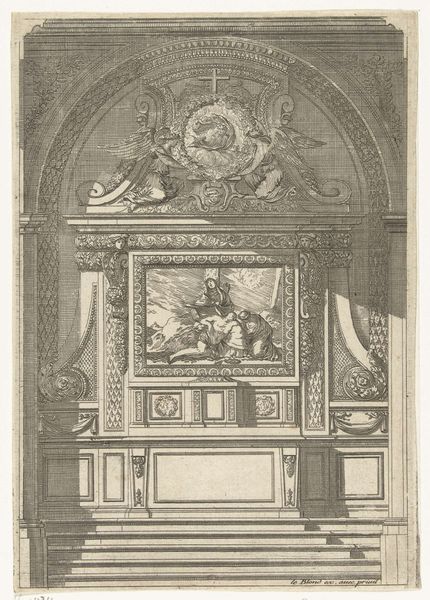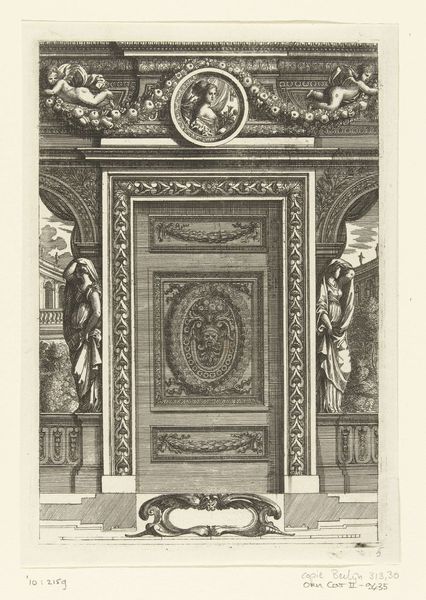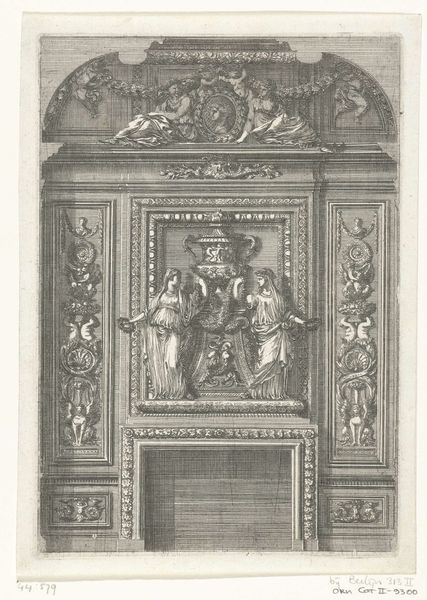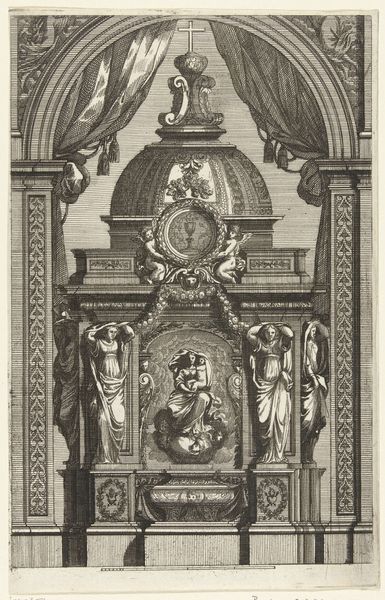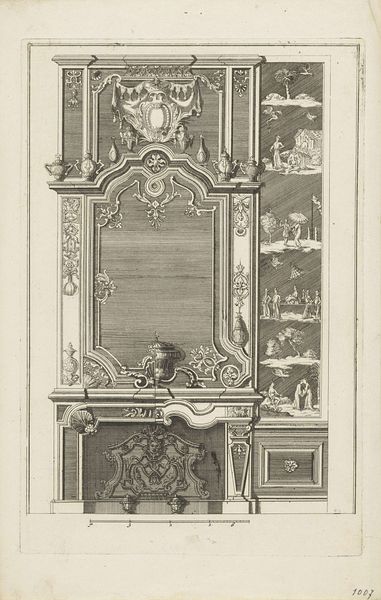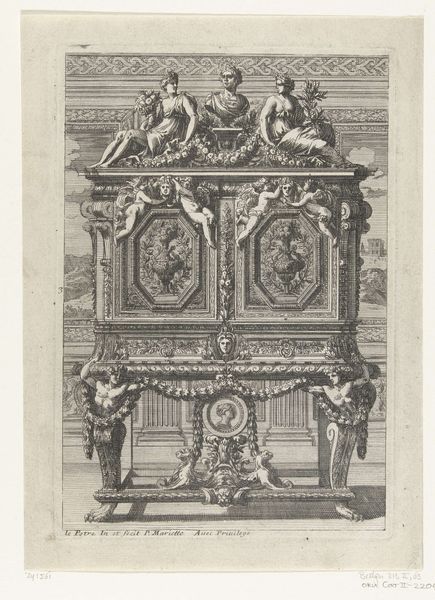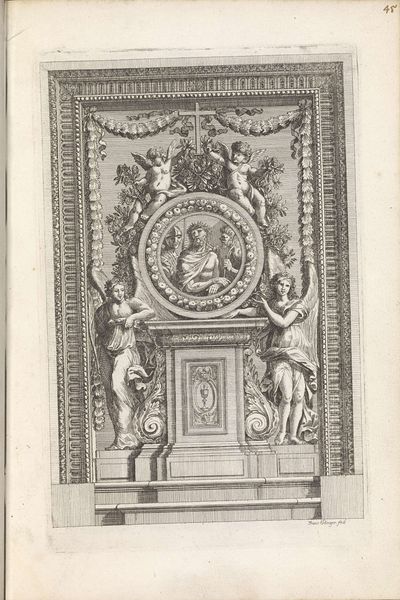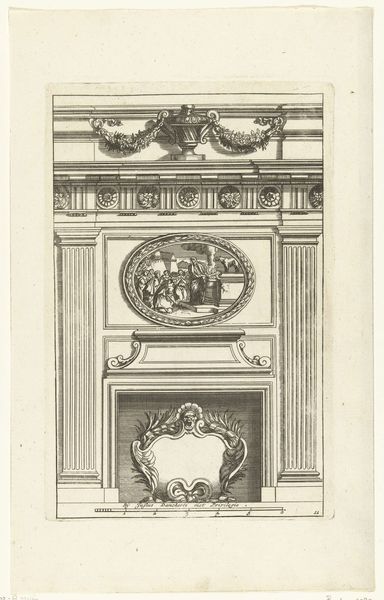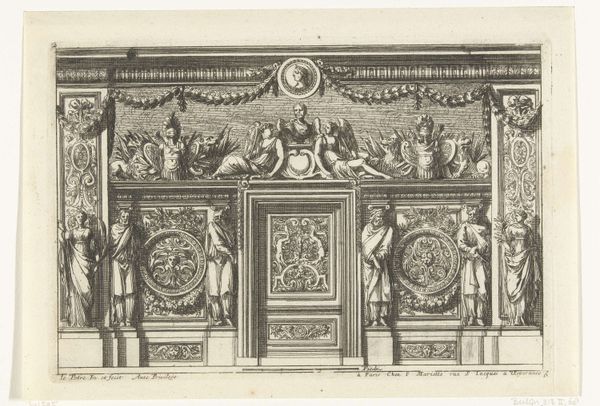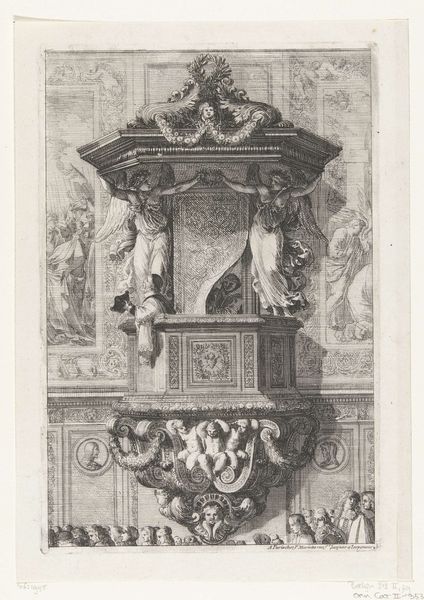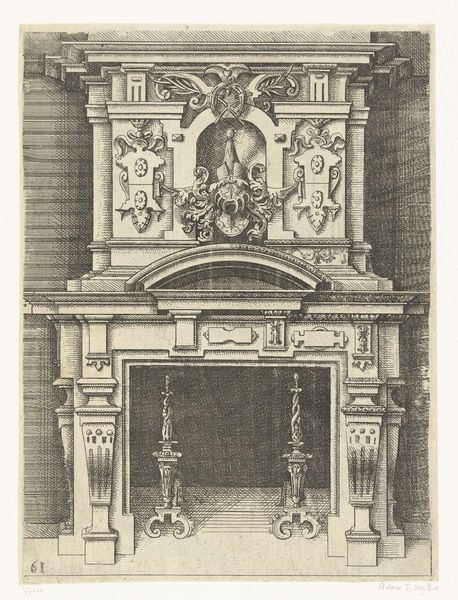
drawing, print, relief, engraving, architecture
#
drawing
#
baroque
# print
#
relief
#
geometric
#
line
#
history-painting
#
engraving
#
architecture
Dimensions: height 193 mm, width 135 mm
Copyright: Rijks Museum: Open Domain
Curator: We are standing before Jean Lepautre's "Schoorsteen," a c. 1651 print held at the Rijksmuseum. Lepautre created it using engraving techniques, capturing an ornate chimneypiece design. Editor: My initial impression is one of excessive ornamentation. The eye struggles to find a resting point amid the densely packed figurative and geometric motifs. It almost feels claustrophobic, despite its architectural subject. Curator: Indeed. The print embodies Baroque aesthetics, reveling in elaborate decoration and intricate detail. Consider how Lepautre utilizes line to create depth and texture, mimicking the relief work found in actual chimney pieces. The historical painting style also influences the ornamental narratives. Editor: Absolutely, one can observe the interplay of power and taste in the architecture and decorative arts represented here. The chimneypiece, more than a functional object, projects social status and cultural aspiration of elite patrons. This style emerged during a period of royal consolidation, making this print reflective of aristocratic sensibilities. Curator: The figures atop the arch—possibly depicting a triumphant procession—inject dynamism into the design, counterbalancing the geometric austerity. Even the material aspects—the print itself, the imagined marble or stone of the chimneypiece—speak to an engagement with form and space. Editor: The depiction of a triumphant figure on horseback serves not just an aesthetic role; it reinforces specific power dynamics and societal values. Such imagery would communicate a vocabulary of success, which may have had social implications. How might the reproduction of this imagery as a print shape contemporary culture? Curator: By circulating architectural designs, engravings like this fueled the aesthetic trends of the time, influencing interior design far beyond the original patrons. This illustrates how formal elements contribute to disseminating socio-political ideologies. Editor: This was a fascinating analysis! I leave appreciating not just the decorative bravado but its broader significance as a historical object shaping taste. Curator: Agreed, it prompts one to contemplate the profound interplay between artistic form and societal norms in the 17th century.
Comments
No comments
Be the first to comment and join the conversation on the ultimate creative platform.
